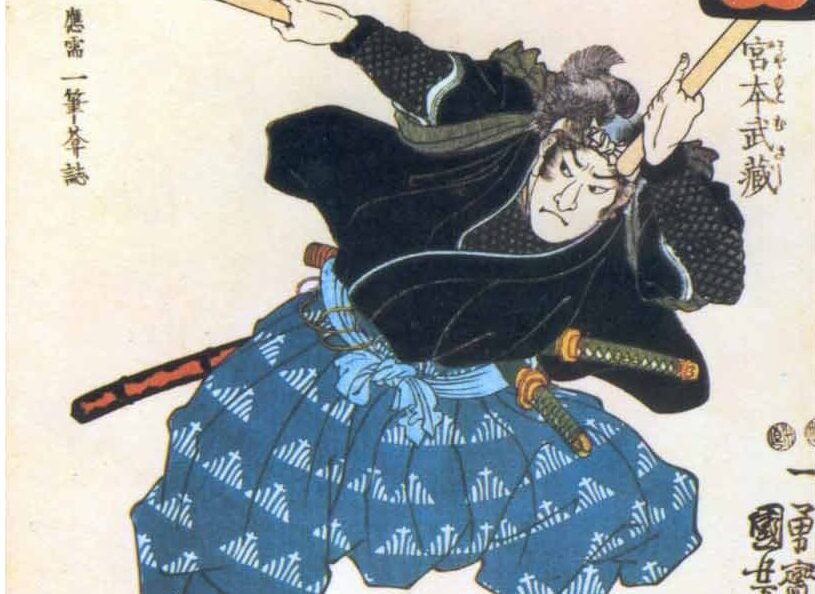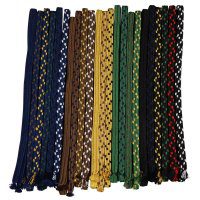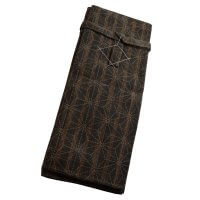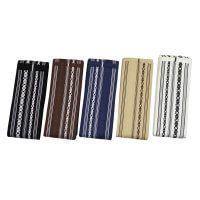Miyamoto Musashi is considered the best fighter in Japanese history.
Who was Miyamoto Musashi?
Miyamoto Musashi was born in 1584 in the province of Mimasaka was born. He was the son of the samurai Hirata Munisai and his real name was Shinmen Musashi.
Historically, his lifetime in Japan falls at the end of the Sengoku period. A time that is also known as the Azuchi-Momoyama period. A kind of transitional period to the later, peaceful Edo period. After Oda Nobunaga had laid the foundations for the unification of Japan and was forced to commit seppuku following the betrayal of Akechi Mitsuhide, Toyotomi Hideyoshi took power shortly before Musashi's birth and had to put a few opponents in their place in order to create the basis for the peace of the Edo period, which began in 1602.
So it was a time when there was more than enough strife and conflict in the country, which was to be the basis for his life.
As usual, he was taught swordsmanship and other martial arts by his own father. He showed great talent right from the start, but was also impetuous and unruly and was often in conflict with his father.
He was therefore mainly brought up by his uncle, a Buddhist monk. He is said to have won his first duel to the death at the age of 13 against a seasoned samurai.
At the age of 16, he started travelling and took part in duels and battles all over the country (more on this later). He took the name Miyamoto. Miyamoto after the place where he was born.
From his own fighting experiences, he developed his own fighting style, Niten Ichi Ryu, which is characterised by the simultaneous use of the two swords katana and wakizashi. A fighting technique that is extremely unconventional.
The legendary fighter was considered a ronin and helped coin the term. Ronin are masterless samurai. A lifestyle that was unusual for a samurai, as they were usually in the service of a master.
He ended his career as a duelling fighter in 1612 after winning a duel against Sasaki Kojiro, at the age of 32, and devoted the rest of his life mainly to art and spiritual perfection.
In 1942, he retired to the Reigando cave, where he meditated and wrote a book about his life and martial arts. He died in 1645 at the age of 61.
What fighting style did he use?
Miyamoto Musahi developed his own fighting style in which he used katana and wakizashi at the same time. A contrast to the classic sword techniques, where only one sword is used. Here is a quote from his book Gorin no Sho:
"To die with an unused weapon in his belt, that would be unfortunate."
The style he developed is called Niten Ichi Ryuwhich literally means "two heavens, one style" and is generally translated as the two-sword technique. Musashi passed on his techniques to students in the peacetime of the 17th century.
His swordsmanship spread throughout Japan and is still taught in various places around the world today.
Source for information about Musashi
Many of Miyamoto Musashi's stories are based on oral traditions and some of them are probably exaggerations.
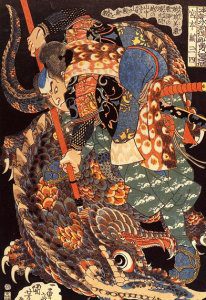
In relation to Musashi's life, what we know about him today is partly reality, but also partly fiction, like a legendary figure. Here, for example, is a woodcut of him fighting with a whale.
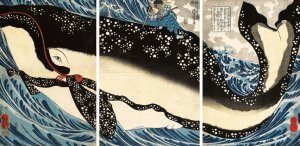
Woodcut: Miyamoto Musashi fights with a whale
In addition to many stories that are difficult to verify, a second major source is a book written by Musashi himself.
Fights
According to his own statement, Miyamoto Musahi has fought and won over 60 duels. However, there are no records or evidence of many of them. For example, the impressive story of his first duel as a 13-year-old comes from himself.
This was followed by numerous more or less undocumented duels, such as the three-part confrontation with the fighters of the Yoshioka clan.
His last duel with Sasaki Kojiro on the island of Funajima is at least documented by the fact that there is a monument on the island showing the duel between the two.
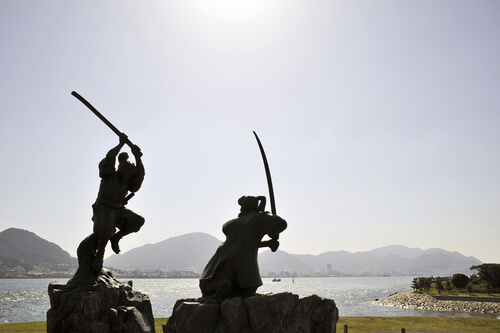
This duel was groundbreaking for Musashi, as he greatly respected his opponent and his martial arts. Killing him in a duel changed his perspective and after that he no longer fought in duels.
Slaughter
Musashi's participation in battles is largely undocumented. For example, he is said to have fought in the legendary Battle of Sekigahara, which took place in 1600 and was seminal in Japanese history. He is also said to have been involved in the famous siege of Osaka Castle.
The only actual documented participation in a battle was his role in the Shimabara Rebellion in 1637, where he fought alongside the Tokugawa shogunate to put down the rebellion. Quite remarkable for his age of 53 at the time.
His work as an artist
For samurai, this also included being taught in various arts. Musashi was particularly gifted in calligraphy and also wrote numerous writings and books.
Books
Of these writings, two in particular are known to us.
Dokkodo
Translated as "The art of walking alone" or "The art of going your own way". In it, he summarises in 21 rules how life as a ronin can best be lived.
Above all, it is about the mental attitude towards oneself and the world.
Gorin no Sho (The Five Ring)
The book Gorin no Sho, known to us as the 5 Rings. In it, Musashi writes about his life and his experiences and opinions on the art of swordsmanship.
Art
Art played an important role in the later years of his life. Some of his works of art still exist.
Painting
There are several paintings by him. They depict typical objects of Japanese art such as landscapes.
Caligraphy
Caligraphy is an integral part of Japanese art. The famous samurai was also active in this field and his calligraphies still exist today.
Miyamoto Musashi Koshirae
In the world of Japanese swords, however, Musashi is also known above all for having made his own mounts (koshirae). Some examples still exist today. There is one fully preserved mount, which has a dark red saya, a distinctive, wide fuchi and a namako tsuba. In our shop we offer a high quality Iaito which is kept in the design of this Koshirae.
Musashi Tsuba
The Namako Tsuba design just mentioned is also known as Musashi Tsuba because it is considered the trademark of the artist. If a sword is offered as a Musashi katana, it usually has this blade.
There are also examples of tsubas in this design by Musashi's students, some of which are signed "Niten" (= two heavens).
Also in our Online shop for Iaito from Japan we offer some swords with tsuba in this design.

